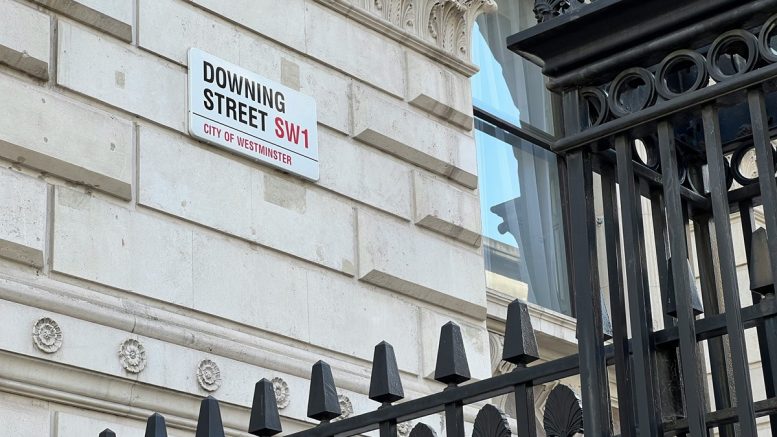Labour The Highland Marketing advisory board met to discuss Labour’s first 100 days in office, the Darzi review, the Budget, and prospects for technology in next year’s 10 Year Health Plan. Their view? The new Labour government has got off to a slow start and needs to come through with a realistic plan for the future of health and care with technology as a key enabler.
If Rishi Sunak had gone to the polls when political correspondents predicted that he would, the UK would have been voting at the start of November. However, he called an election in May, the country voted on 4 July, and Sir Keir Starmer had been in his job for four months by the time bonfire night rolled around.
The NHS emerged as an election issue during the campaign, which posed a challenge for Labour. The party knew it was going to inherit an economy with low levels of growth and high levels of debt. It also knew the NHS was struggling and ‘unprotected’ public services were facing cutbacks on an undeliverable scale.
Yet shadow chancellor Rachel Reeves ruled out the most obvious ways to raise taxes. So, Labour made the electorate a ‘retail offer’ of an additional 40,000 appointments per week to tackle waiting lists, paid for by a crack-down on ‘non-doms’, while insisting there would be no further money without “reform.”
Buying time
When he arrived at the Department of Health and Social Care, new Labour secretary of state Wes Streeting announced that “the policy of this department is that the NHS is broken.” He also announced an independent review by Lord Ara Darzi, a surgeon and health minister in Gordon Brown’s government.
In September, Lord Darzi made headlines by declaring that the NHS “is in serious trouble.” But health tech entrepreneur Ravi Kumar said: “there is nothing in there that will surprise people who have been in and around the NHS.”
“There were no surprises in there,” agreed David Hancock, an interoperability expert who has worked for both shared care record and electronic patient record suppliers, “so why do it? The only reason was to buy time.”
Cindy Feddell, a former NHS CIO who now works in Canada agreed, although she felt more urgency was needed. “I thought they would have used the review to launch a plan, but they didn’t,” she said. “It’s very disappointing, because it is a plan we need, not more strategic reviews.”
Diagnosing NHS Failure
Lord Darzi did make a diagnosis of the NHS’ problems that could feed into the 10 Year Health Plan due next January. He argued the root of its challenges lie in the austerity politics of the Cameron/Osborne era, that starved public services of money while driving demand.
He argued these issues were exacerbated by the “calamity without international precedent” of health secretary Andrew Lansley’s reforms in 2012, which fractured NHS structures in a last-ditch attempt to drive competition across the system.
But he also noted that the governments that came before and after these changes have talked about ‘left shift’ reforms without making them stick.
Lord Darzi argued one reason is that they failed to align funding flows with these changes. Plus, he noted, it has become routine to transfer capital funding to the ‘frontline’ – leaving the NHS with crumbling facilities and “stuck in the foothills of digital transformation.”
Labour reform talk and reality on the ground
When Streeting talks about “reform” these days, he talks about three shifts: from hospital to community, from treatment to prevention, and from analogue to digital.
However, Nicola Haywood-Cleverly, a former chief information officer and trust non-executive director, noted there is a big gap between where the NHS is now, and where these three shifts would take it.
At the moment, she said, NHS England is focused on waiting lists and financial discipline, even if this means cuts in staff or services that pull in a different direction. “I want to know what is going to be different,” she said.
“At the moment, my main concern is there might be a gap between what the Operational Priorities and Planning Guidance [which sets out NHS England’s ‘must dos’ for the service] and the 10 Year Health Plan might say.”
Labour Budget smoke and mirrors
This gap was not closed by the much-anticipated Budget delivered by chancellor Rachel Reeves in October. To fill the “£20 billion black hole” in this year’s public finances, invest in infrastructure, and stabilise public services, Reeves raised taxes by £40 billion and borrowing by £70 billion.
Around half the headline tax increase will go to the NHS, which was promised £22.6 billion over two years. However, this year’s £10.4 billion includes a £1 billion transfer from the capital budget and £1.8 billion for waiting list initiatives announced in the summer.
What’s left will have to cover financial pressures of around £4.8 billion, drug and pay pressures, including changes to employer National Insurance contributions.
“What came out of the Labour Budget was smoke and mirrors, again,” said James Norman, who worked in NHS finance and as a trust CIO and who now works on the supplier side. “It is just covering the pressure that is there; there is nothing new coming down the line.”
In fact, he argued, it’s worse than that, because NHS employers will be covered for the NI changes, but the GPs, third sector, and social care providers who will have to deliver any shift from hospital to community and prevention, won’t. Another example of how talk about reform and reality on the ground are pulling in different directions.
Capital funding mirrors and smoke
The Budget also made a big deal out of promising more capital spending. An additional £3.1 billion was added to next year’s capital budget, taking it to £13.6 billion. Of this, £1.5 billion has been allocated to capacity increases, including additional beds, surgical hubs, and scanners, and £2 billion to “technology and digital.”
However, the advisory board noted that while Streeting talks about a shift from analogue to digital it is virtually impossible to invest in the current climate. “Digital leaders are saying they cannot do anything without going through two or three layers of governance outside their own organisations,” said Nicola Haywood-Cleverly.
“That makes it very hard for suppliers to build a pipeline.” Many trusts are having to freeze vacant non-clinical posts to manage system deficits, reducing their capacity to digest innovation and transformation.
Meantime, it is unclear whether Reeves’ tech spending is new money or, in effect, a re-announcement of the £3.4 billion that her predecessor, Jeremy Hunt, announced for NHS digitisation in March. Certainly, the Treasury ‘red book’ makes no mention of the latter.
Left shift, acute capture
For the advisory board, though, the big question is how Labour plans to spend the money that will be available. Rizwan Malik, imaging leader, picked up on the promise to invest in community diagnostic centres and scanners. In principle, he argued, this could help to ‘left shift’ services into the community; but in practice many CDCs and new scanners have been attached to acute trusts.
Nicola Haywood-Cleverly argued there are similar issues with virtual community and urgent health care. Some of the innovative projects developed during the Covid-19 pandemic have morphed into virtual wards overseen by acute trusts “so primary and community-led care in its purest sense has been diluted, and become part of the old way of doing things.”
Integrated care boards were set up to create joined up services that still found room for both health and social care providers and innovative ideas. But, as Lord Darzi pointed out, NHS England’s policy focus and funding flows have not moved in the same direction – and nor has investment in IT.
Where’s the enabling tech?
The Treasury red book says Reeves’ £2 billion will “run essential services and drive NHS productivity improvements” while making sure that all trusts have electronic patient records, the NHS has better cyber security, and there are enhancements for the NHS App.
James Norman pointed out it makes no mention of some of the big, enabling technologies that will be needed to ‘left shift’ services and loop in innovative providers or social care. “What has happened to the shared care records?” he asked, as one example.
“They were meant to connect care, by integrating data and letting people see information relevant to them. But in some places people have backed them while in others they’ve been put in at a minimal level and nobody is using them. What’s the plan?”
Big projects, brownfield sites
Just before the advisory board met, the DHSC announced that eleven ‘enabler’ groups have been set up to feed into the 10 Year Health Plan. Encouragingly, there is a digital group, led by NHS England chief data and analytics officer Ming Tang and former national director of transformation Tim Ferris.
However, Ferris is best known for launching the Frontline Digitisation programme to complete the deployment of EPRs at trusts and Tang is leading on the roll-out of Palantir’s Federated Data Platform, which suggests the group may focus on acute IT.
It could also go looking for a ‘big project’. The Tony Blair Institute for Global Change has been making a lot of noise about creating a single, digital health record for every UK citizen within five-years.
But it has failed to answer questions about whether it would build on initiatives like shared care records, or junk them. Advisory board chair Jeremy Nettle raised a similar issue about the NHS App. When it was set up, the app was billed as a “digital front door” for the NHS.
Then NHSX decided it should just provide identity and login services and sign-post people to third-party apps. Now, it’s a mishmash of login and basic functionality; a lot of which is dependent on what GPs allow their patients to see.
“The NHS App shows that it is not just technology that matters,” he said. “It is how it is deployed and how it is used. You need a roadmap and consistent investment to deliver.”
One plan, with technology at its heart
The advisory board also felt that it would be a mistake to develop a 10 Year Health Plan with strategies to support it. Past experience suggests these strategies too easily become menus of options, from which ideas are funded or not-funded according to political interest and the finances available.
Instead, the board argued that Labour should develop one plan, that explains how the finance, workforce, and technology available will be used to enable its direction of travel. “We shouldn’t have a 10 Year Health Plan and a tech strategy to go with it,” James Norman argued. “There should be one plan that says how technology will be used to deliver.”
Unfortunately, as Jeremy Nettle pointed out, that won’t be easy to achieve. “The NHS may not be broken, but it’s certainly unwieldy, and its integration with social care is complex, and both are subject to a lot of different pressures that will need sustained effort and investment to address,” he said.
And what does Labour plan for social care?
Social care is a crisis of its own; one that is threatening to bankrupt councils and providers, while not providing adults the care they need. After the main board meeting, Jane Brightman, a social care expert with a special interest in technology, said there had been some measures for the sector in the Budget.
These included £600 million of new grant funding for local authorities, an £86 million increase to the Disabled Facilities Grant to support 7,800 more adaptations to homes to reduce hospitalisations and prolong independence, and an increase to the Carer’s Allowance weekly earnings limit from £151 a week to the equivalent of 16 hours at the National Living Wage (which means carers can earn over £10,000 per year).
There was also an extra £250 million to test new ways of working in children’s social care next year, including a pre-announced £44 million to test allowances for kinship carers and to roll out regional hubs to support the recruitment of foster carers.
Despite these measures, she said there is significant concern that this will not make a dent in the sector’s current problems, or the ones being stored up for the future. The increase in employer National Insurance contributions will also hit the sector hard and could swallow up any additional funding on offer.
Despite the Labour government’s missions to improve and its talk about reforming health and social care, a Fair Pay Agreement for social care workers and a National Care Service have not featured in its first months in government. “Both ideas are welcomed by the sector, but too far down the road to provide the hope that is much needed right now,” Jane said.
About the Highland Marketing advisory board
The Highland Marketing advisory board includes: Jeremy Nettle (chair), formerly of Oracle and techUK; Cindy Fedell, regional chief information officer at North western Ontario Hospitals, Canada; Nicola Haywood-Cleverly, a former integrated care system chief information officer, non-executive director for NHS foundation trusts, and health tech strategist and advisor; Andy Kinnear, former director of digital transformation at NHS South, Central and West Commissioning Support Unit and now consultant at Ethical Healthcare; Ravi Kumar, health tech entrepreneur and chair of ZANEC; Dr Rizwan Malik, consultant NHS radiologist and director of SMR Health Tech Consultancy; James Norman, EMEA health and life science director, Pure Storage; Ian Hogan, CIO at the Leeds and York Partnership NHS Foundation Trust; Neil Perry, former director of digital transformation at Dartford and Gravesham NHS Trust and now director at Synergy Digital Health Innovation; David Hancock, digital health strategist specialising in interoperability; Jane Brightman, director of workforce strategy at Skills for Care; Natasha Phillips, former national CNIO and now founder of Future Nurse.
About Highland Marketing
Highland Marketing is a specialist marketing, communications, market access and consultancy agency, focusing on the health tech and med tech industries. We offer an integrated range of services, covering all elements of the marketing mix, to help organisations achieve their goals by ensuring their messages are heard, understood, and acted upon by their chosen audiences. Our highly experienced and well-connected team has deep knowledge of health and care technology, strong contacts in the industry, and is well-versed in delivering effective campaigns and content. We support clients across the NHS and EMEA healthcare markets and work with clients looking to expand from the UK into international markets, and with overseas companies looking to enter the UK market.
Website: www.highland-marketing.com Twitter: @HighlandMarktng





